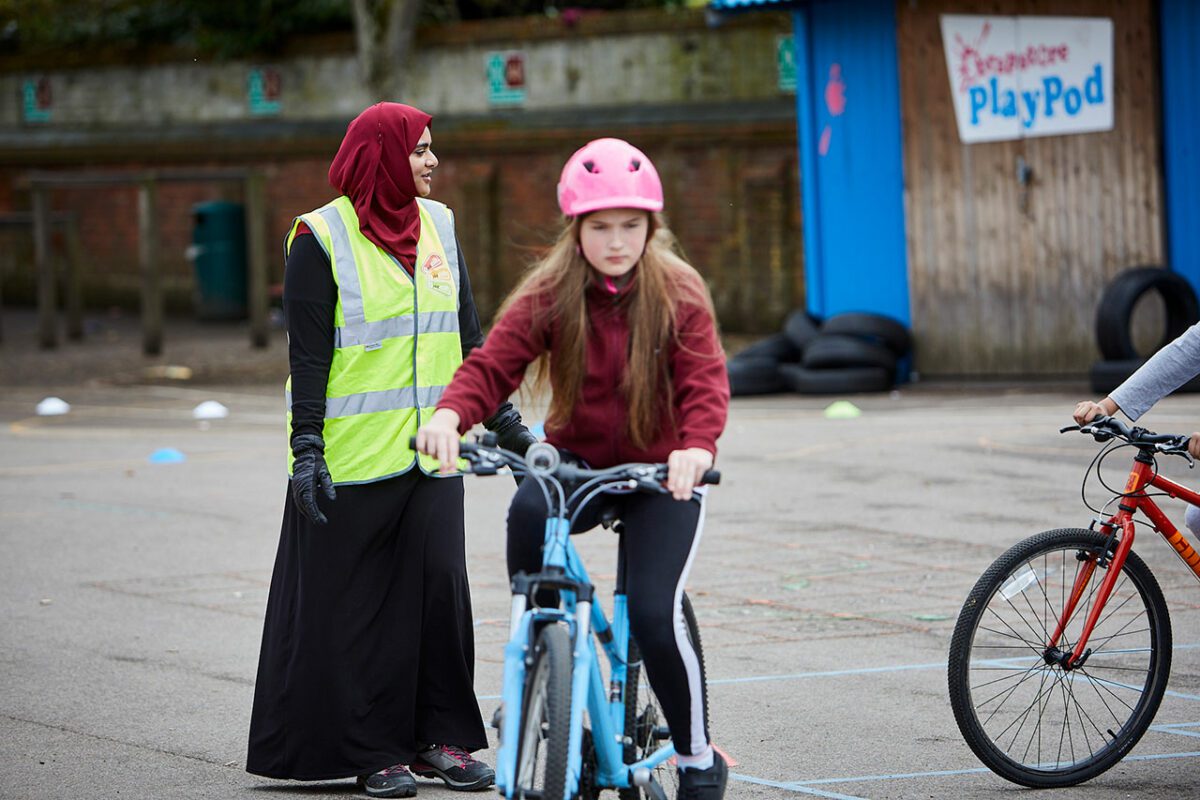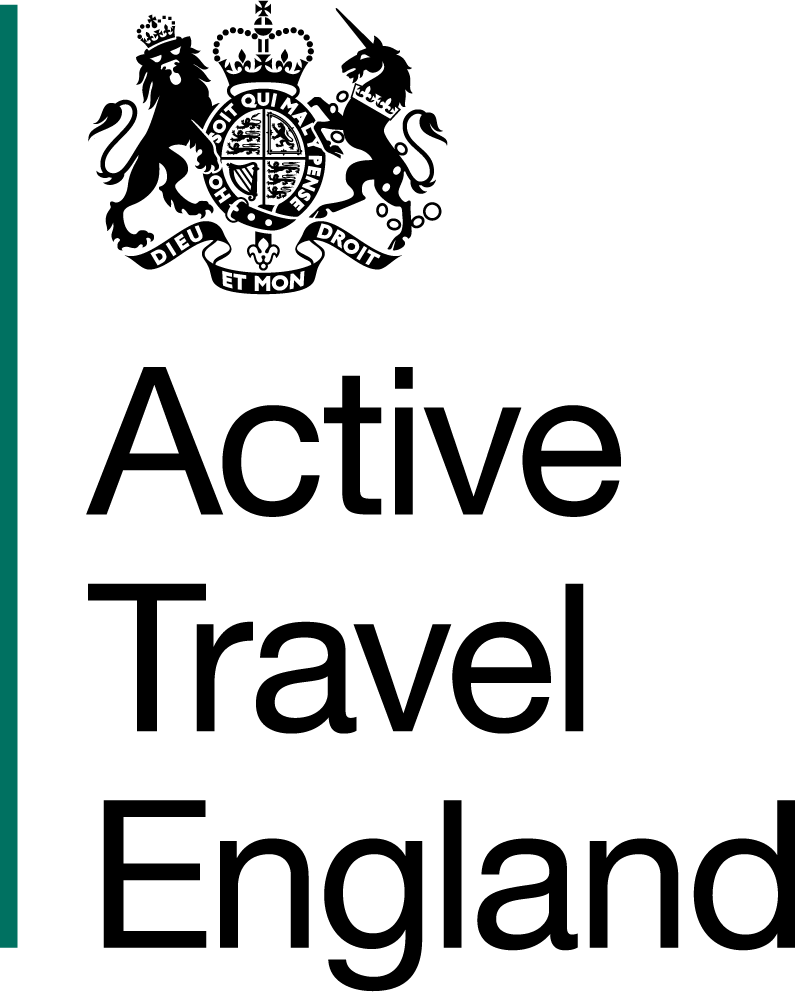5.5. Working with children


When working with children, the training approach should be as rider-led as possible. Here are some strategies to help you deliver engaging, fulfilling and rider-led training to younger riders:
Consider the specific needs and abilities of riders:
Consider children’s developmental stages when planning and delivering cycle training sessions. You should think about the current cycling ability of all riders, as well as their level of understanding, their communication skills, maturity, and their physical and emotional needs.
When working with multiple groups of riders, you may or may not have the opportunity to reorganise training groups according to the ability of riders. There may be advantages and disadvantages to reorganising training groups according to ability. On the one hand, reorganising groups may lead to more personalised training sessions where riders have enough time to practise key elements and be suitably challenged. On the other, there may be advantages to having mixed-ability groups as less skilled riders may learn from, and be supported by, those who have more experience.
Plan and deliver sessions that are enjoyable:
The training experience needs to be an enjoyable one! For training in traffic-free environments, fun game-based activities may be helpful to keep riders engaged as they develop their cycling technique.
During on-road training, you should teach and coach in a positive way that gets riders thinking about the various exciting opportunities and benefits that cycling offers.
Pitch training at a suitable level:
Training activities need to be suitably complex for riders in the group so that they feel challenged enough.
Younger riders may have very limited experience of making independent decisions in on-road environments. They may need support to judge distances when checking if it’s clear at Give Way Lines. Equally, older children may be less likely to feel intimidated by busier on-road environments so may be able to manage higher traffic flows.
If you deliver on-road training on roads that are too quiet, be aware that riders’ learning and motivation to engage in the training experience may be limited. Similarly, if training takes place on roads that are too complex, or challenging roads, riders may struggle and could find the experience stressful.
Use strategies to support riders as appropriate (for example, buddy riding, adjusting the length of point-to-point journeys, choosing whether or not to link manoeuvres). Progress activities at a suitable pace for all riders.
Give praise and positive encouragement:
Feedback should be specific and paired with encouragement. Praise will help create a positive and rewarding learning experience where younger riders feel motivated to improve their cycling. Be sure to praise effort as well as achievement and do not blame riders for making mistakes. Instead, create a positive learning environment where riders are encouraged to reflect on what they’ve done well and how they can learn from their mistakes.
Make expectations and responsibilities for riders clear:
At the start of cycle training courses, you should clearly outline to riders what will be covered in the training and what they and the riders can expect from one another. Tell riders that they will receive a certificate following the training and that this certificate will include an assessment of their cycling ability. This process can help set a framework for learning and motivate riders to learn and cycle to the best of their ability on the course.
Ask a group of riders to set responsibilities for one another at the start of a course (for example, supporting and respecting each other, listening to instructors and to each other, agreeing to one person talking at a time). This can help ensure riders remain focussed in the training that will follow. This process can also help you to communicate the style of riding that will be used during the course (“Wheelies are great, but this is not how we ride to school!”).
If you support the riders to set their own learning and group-working responsibilities for one another (rather than imposing rules or responsibilities onto the group), they will be more likely to stick to the agreed responsibilities. This helps create a positive learning environment for all.
Encourage a teamworking approach among riders in a group:
Asking riders to help one another during training sessions can be an effective way to increase engagement in sessions. There will be many ways to do this, such as by:
- asking riders to highlight strengths in each other’s cycling
- carrying out Level 1 activities that require all the riders to work together
- getting riders to support different partners when doing independent riding exercises
- getting riders to support each other when riding in a group out on the road
Use active learning:
Compared to adults, children are less likely to stay focussed if you talk to them for long periods of time. You should therefore consider how much ‘talk time’ you include in your session. Aim to get them cycling as soon as possible.
When riders are not cycling themselves, engage them in other forms of active learning. This could involve you (or a co-instructor) giving them feedback, or asking them to observe and review other riders in the group.
Give riders responsibility:
Younger riders are more likely to engage in the training experience if you allow them to take responsibility for themselves. During Level 1 training, give each rider a turn in ‘leading’ the snake (or line of riders). This can be very empowering and can boost their confidence.
When moving groups out on the road, give different riders the opportunity to be the last rider in the snake (they will then need to communicate with road users behind when the rear instructors move up to the front).
Having this responsibility helps the riders to build confidence and gives them more opportunities to learn. You can also give riders more responsibility through active learning strategies. These include asking them to support one another within the group, or getting them to take it in turns to ride in front of the front instructor.
You should get riders to self-evaluate (reflecting on what they’ve done well and what they need to improve on) and ask them to peer review (where they observe and review other members in the group). These are helpful ways to transfer responsibility onto the riders and actively engage them in the sessions.
Use appropriate language and communication:
You should consider riders’ learning styles and adapt the training approach accordingly. If riders struggle to understand verbal instructions, they may benefit from visual learning aids (such as pictures or whiteboards). Think about how you might include these.
Remember to use language that’s suitable for the riders’ age. Most children will find it easier to understand the term ‘four key skills’ compared to the ‘four core functions’ as used in the National Standard.
Certain terms such as the words ‘routines’ or ‘observations’ may need defining so that children understand them. Use simple definitions where possible. For example, the term ‘priorities’ may be simply defined as ‘who goes first?’ You’ll also need to clearly explain and define the ‘primary’ and ‘secondary’ riding positions using simple language (and/or images) that riders understand, for example, ‘Follow me’ and ‘Pass me’.
You should also use language that encourages independent thinking and decision making. Rather than saying, “Cover your brakes”, you can ask, “Where do we need to keep our fingers and when should we do this?” During partner or snaking exercises, you could ask, “Are you going to follow the person in front or check for yourself?”
Use language that enables young riders to understand the different ways in which they can communicate when cycling on the road. Rather than saying, “There’s a car behind you”, you should instead use terms like ‘driver’ or ‘person in a car’. This can help prompt riders to communicate with others and feel like road users themselves.
You should avoid using language that suggests riders may be harmed. Rather than asking, “Is it safe to go?”, you can ask, “Do you have time to move out?”
When co-working with another instructor, consider whether to share the delivery of the key coaching points, rather than relying on the voice of a single instructor during the session Sharing delivery between both instructors can be a helpful way to keep riders engaged.
Be a role model:
It is essential that you act professionally and treat riders with respect at all times. You also need to demonstrate best cycling practice – children are likely to copy your riding style and overall behaviour. By staying calm, performing excellent demonstrations and treating other road users respectfully, your riders are likely to follow good practice.
Provide riders with the necessary level of support and supervision:
Children will normally need a higher level of support and supervision than adults during training activities. Progress activities in a rider-led manner and keep children in sight at all times where possible. Riders should only attempt specific activities or exercises once you decide they are ready to do so. They may also need extra support in other areas, such as when crossing the road before, or directly after, attempting independent riding exercises.
